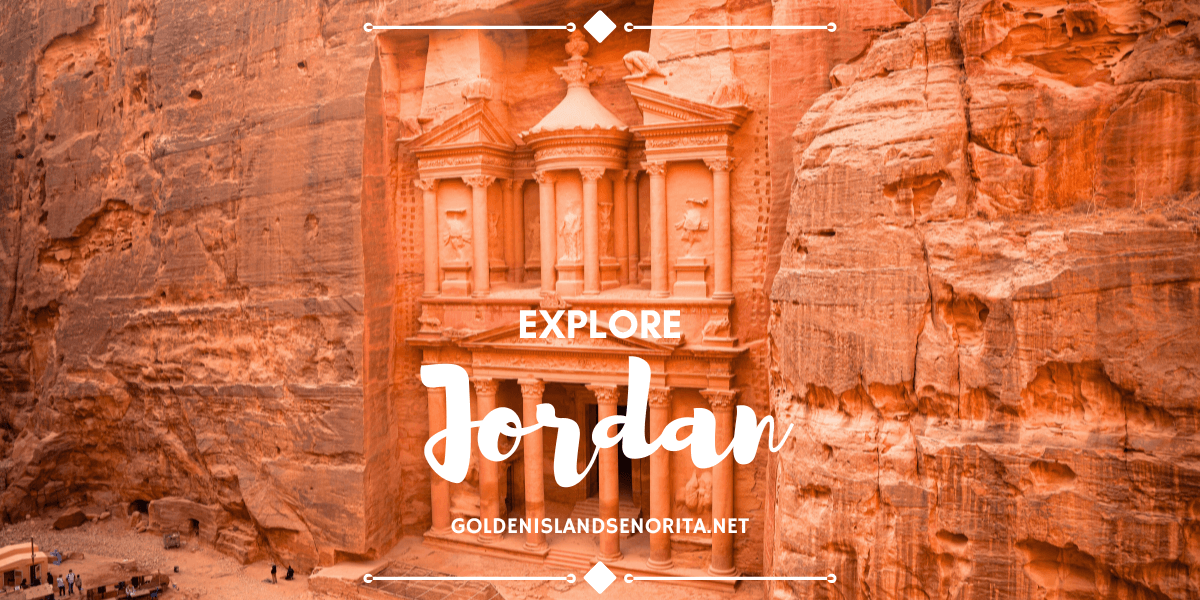Jordan is a land of ancient history, dramatic landscapes, and warm hospitality. From the breathtaking sandstone city of Petra to the unique experience of floating in the Dead Sea, Jordan offers a diverse mix of cultural, historical, and natural attractions. Whether you’re looking to explore the vibrant streets of Amman or trek through the otherworldly desert of Wadi Rum, Jordan is a destination that captures the imagination and heart of every traveler.
This guide will walk you through everything you need to know before embarking on your Jordanian adventure.

Travel Essentials for Visitors
VISA POLICY
Traveling to Jordan is relatively straightforward for many nationalities. Most visitors can obtain a visa upon arrival at the airport or any land border crossing. A tourist visa is typically valid for 30 days. The visa-on-arrival fee costs around 40 Jordanian dinars (JOD), but it’s always wise to check with the nearest Jordanian embassy for up-to-date information. To save time and money, consider purchasing the Jordan Pass, which waives visa fees and includes entry to over 40 tourist attractions, including Petra.
TRAVEL INSURANCE
It’s essential to have comprehensive travel insurance when visiting Jordan. Medical care in urban areas like Amman is good, but travel insurance will cover any emergencies, from health issues to cancellations and delays. Make sure your policy includes coverage for adventure activities, especially if you plan on trekking or diving in the Red Sea.
READ: Feel free to check out my SafetyWing Insurance review for further details about this insurance option. It’s a great resource for getting more insight into what this insurance has to offer.
Geography
LOCATION
Jordan is a small country but diverse in geography. To the west, it borders the Jordan River and the Dead Sea, the lowest point on Earth. In the east, vast desert plains dominate, while the north features fertile valleys. Jordan also boasts the majestic Rift Valley, an area filled with dramatic landscapes, as well as the Red Sea coastline at Aqaba, a popular destination for divers.
The country experiences a Mediterranean climate, with hot, dry summers and mild, wet winters. The best time to visit is spring (March to May) and autumn (September to November), when temperatures are moderate, and the landscapes bloom with wildflowers. If you’re planning to explore Petra, consider visiting early morning or late afternoon to avoid the midday heat.
Demographics
LANGUAGE
Arabic is the official language of Jordan, and you’ll find that most people are fluent in Modern Standard Arabic. However, many locals, especially in urban areas and the tourism industry, speak English, so communication for tourists is relatively easy.
RELIGION
Jordan is a predominantly Muslim country, with over 90% of the population identifying as Sunni Muslim. However, there is also a significant Christian minority, and the country is known for its religious tolerance. Visitors should be mindful of local customs, particularly during the holy month of Ramadan, when eating, drinking, and smoking in public are not permitted during daylight hours.
Infrastructure
CONNECTIVITY
Jordan offers reliable internet services, especially in major cities like Amman and tourist areas like Petra and Aqaba. Most hotels, cafes, and restaurants provide free Wi-Fi. Purchasing a local SIM card is easy and affordable if you need constant connectivity, with major providers like Zain and Orange offering competitive packages.
TRANSPORTATION
Getting around Jordan is convenient, with a variety of transport options. Amman has a robust taxi service, and apps like Uber and Careem are available. For long-distance travel, buses like JETT connect major cities and tourist sites. Renting a car is also a popular option, offering the flexibility to explore more remote areas. Roads are well-maintained, and driving conditions are generally safe.
SOCKETS AND ADAPTERS
Jordan uses type C, D, F, and G plugs, and the standard voltage is 230V. Travelers from countries with different voltage levels or plug types will need an adapter and possibly a voltage converter. It’s a good idea to bring a universal adapter to ensure you can charge all your electronics during your stay.
Culture and Society
CUISINE
Jordanian cuisine is a delightful mix of Levantine and Middle Eastern flavors. Must-try dishes include mansaf, the national dish made from lamb cooked in a fermented dried yogurt sauce, served with rice; maqluba, a flavorful rice dish with meat and vegetables flipped upside down before serving; and falafel and hummus, staple street foods. Don’t forget to try kanafeh, a rich, sweet cheese pastry soaked in syrup, for dessert.
TOURISM
Tourism plays a significant role in Jordan’s economy. Petra, often referred to as the “Rose City” due to its pink sandstone, is Jordan’s most iconic attraction and one of the New Seven Wonders of the World. Wadi Rum, also known as the Valley of the Moon, offers a unique desert experience with its stunning red dunes and rock formations. Other popular destinations include the Dead Sea, where you can float in salty waters, and the ancient Roman city of Jerash.
Jordan is also an emerging destination for ecotourism, with initiatives focused on conserving the country’s natural beauty and wildlife, particularly in nature reserves like Dana and Ajloun.
Finance
CURRENCY
The official currency in Jordan is the Jordanian Dinar (JOD), often denoted as JD. One dinar is subdivided into 100 piastres. Jordan is considered relatively expensive by Middle Eastern standards, so budgeting carefully is important. Credit and debit cards are widely accepted in hotels, restaurants, and large stores, but always carry cash for smaller establishments and tips.
BANKS AND ATMS
Jordan has a well-developed banking system, and ATMs are easily found in cities and tourist areas. Major banks like Arab Bank and Bank al Etihad offer reliable ATM services, with most machines accepting international cards. It’s advisable to inform your bank of your travel plans to avoid any disruptions in accessing funds while in Jordan. Keep in mind that some ATMs may charge withdrawal fees, so plan accordingly.


